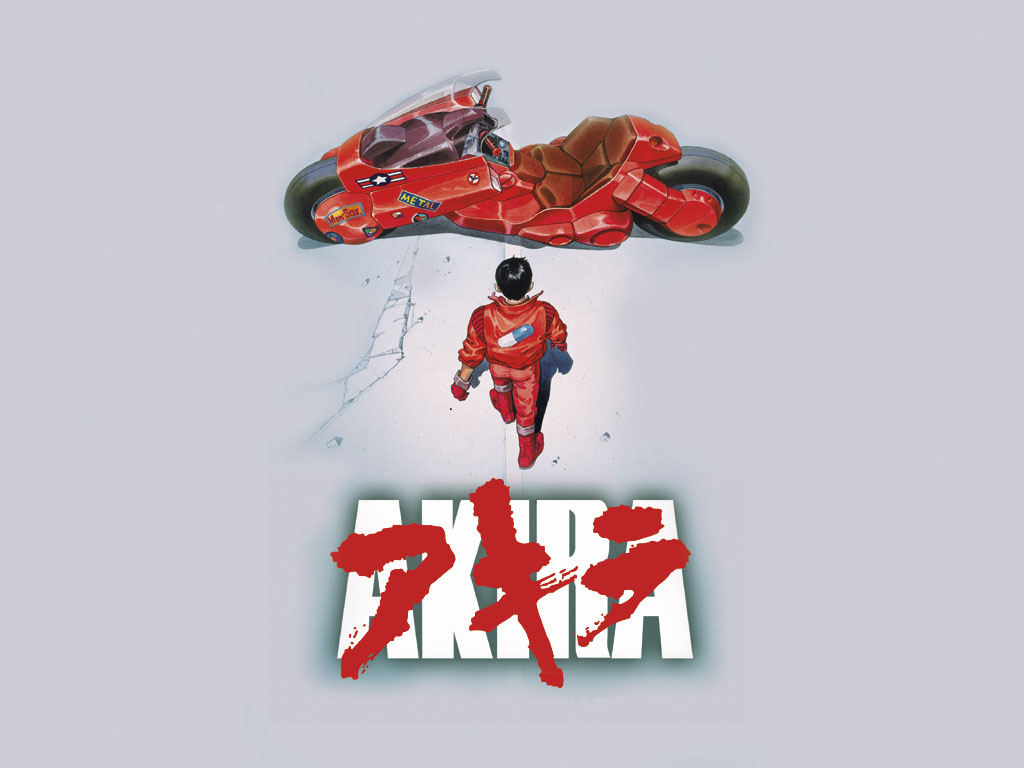
In high school I had two things scrawled on my backpack. "Generalizations suck" and "Akira is coming, but Tetsuo will be first." Generally speaking, generalizations still suck and Akira is still coming. I loved Akira as a teenager. It's a great story, beautifully animated and completely ahead of its time. I could watch it today and still be engaged by the animation and complex storyline. I own most of the original Akira comic books, and what I don't own I have in graphic novel form. They're the only comic books I still own, having sold or given away everything else in past inter-continental moves.
The basic storyline to Akira is straightforward. The government experiments on orphans with mind altering drugs. Some go crazy, some have their heads explode and others just die. Akira is one of the first and most successful of the early trials. We only hear of the experiments on Akira through flashbacks and inter-character dialogue, but we learn that these experiments have transformed him into a powerful bodhisattva-esque phantom who no longer requires human form and can dispense wisdom directly into your mind. Another kid, Tetsuo, gets the drug treatment and becomes a violent megalomaniac. And a third kid, Kaneda, doesn't get any treatment, but fights Tetsuo in multiple David vs. Goliath deathmatches as Tetsuo Godzilla rampages through Tokyo. This is the basic storyline and doesn't really do the film justice, but you get the idea.
Otomo paints a dark picture of Japanese society filled with corruption and different factions vying for control. And that's just the movie. The books are even more complicated, and can be read multiple times to pick up new information. It's great fiction and Katsuhiro Otomo makes amazing art.
A recurring theme in Akira is the advancement of the human species towards a telekinetic neo-sapien. The kids that are experimented on are chosen because of their latent gifts in telekinesis that can be brought out by administering drugs. However, when this happens the authorities have no idea what will happen and can't control the outcomes. This is a pretty common theme in science fiction and there's nothing particularly novel about this trope in Akira. Adults in governments always love to experiment on kids in sci-fi, and typically they can't control the results. Stories about creating monsters in labs then unleashing them on an unknowing society have their roots in Mary Shelley's Frankenstein, which itself borrowed from stories of the Golem from East European Jewish folklore. This is an old and well-worn trope, but that doesn't diminish Otomos's treatment of it.
Where Akira sets itself apart is in its execution and character development. The comic books are amazingly well written by 1980's standards, and the movie looks like it was made atleast ten years after its actual publication date of 1988. The soundtrack alone is an interesting mixture of synthesizers, orchestral music and traditional Japanese Noh theatre music. The whole production was ahead of its time.
Wikipedia says Akira is a cyberpunk story and I don't disagree with that. The main protagonists are punkish, gritty bikers, poor and forgotten by society. They're basically chaotic good and much of the dramatic tension in the film involves Kaneda trying to bring Tetsuo back into their chaotic good outlaw biker gang while Tetsuo can't seem to stop morphing into ever more terrible versions of himself. However, unlike Neuromancer, the proto-typical cyberpunk novel, characters don't augment themselves with computer-biological interfaces. Otomo skips that step and goes straight to characters that control the physical world with their minds.
Otomo uses telekinesis as a reference to cybernetic manipulation at a distance, and I love how he doesn't bother explaining how any of this works. Akira can thus explore the consequences of cybernetic manipulation through the on-screen display of telekinesis, and avoid lots of silly techo-babble that would make it feel dated today. When Tetsuo loses his arm and refashions a prosthetic from odd bits of metal is Tetsuo literally extending his central nervous system into metal through telekinetic force, and a perfect example of this reference.
The scrawled messages on my highschool backpack were my understanding of the future as a teenager, and looking back I don't think I was that far off. Our cybernetic ability to manipulate physical objects at a distance will only increase. We don't even need drugs for it, we have the Internet. Not all those with the power to manipulate physical space from a distance use this power responsibly, or even know how to deal with this power, and they certainly are not all chaotic good. Whether we as a species can get from the Tetsuo to the Akira stage still remains to be seen.